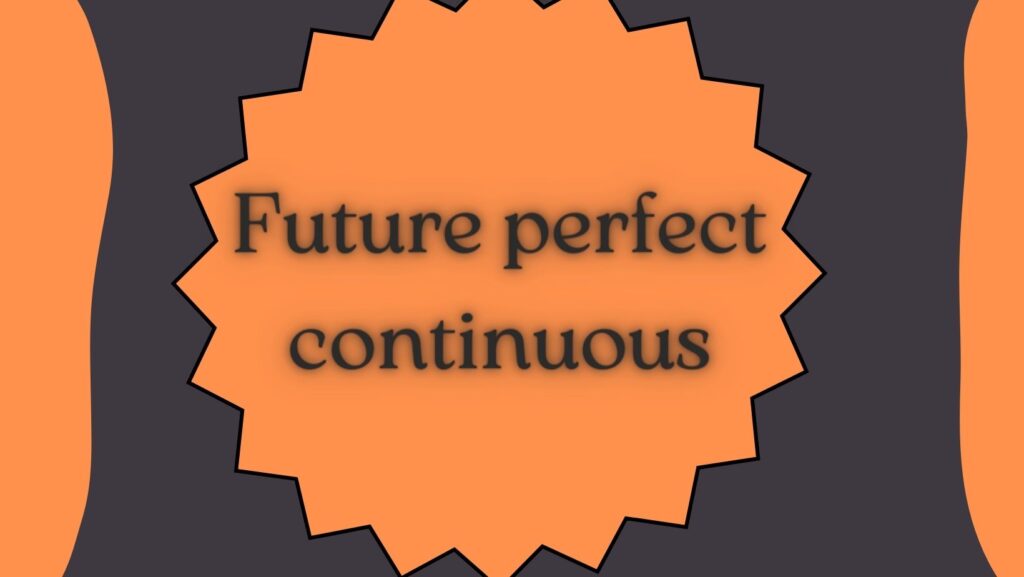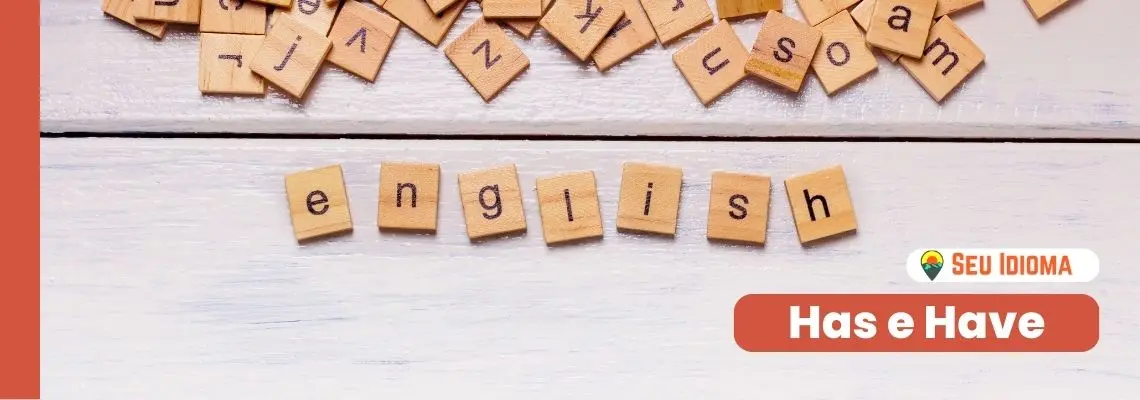O Futuro Perfeito Contínuo, também conhecido como Future Perfect Continuous ou Progressive, é um tempo verbal em inglês utilizado para expressar a continuidade de ações que estarão em andamento em um momento específico no futuro. Este tempo verbal é especialmente útil para descrever ações que se prolongarão por um período determinado, enfatizando a duração até um ponto futuro.
Expressões como “for ten minutes” (por dez minutos) ou “for three weeks” (por três semanas) são comumente empregadas no uso do Futuro Perfeito Contínuo. Além disso, o termo “by” em combinação com expressões de tempo como “next month” (próximo mês), “next week” (próxima semana) e “next year” (próximo ano) é frequentemente utilizado para marcar o ponto de referência no futuro.
Mas, afinal, o que exatamente é o Future Perfect Continuous e como ele é usado para formar frases? Continue a leitura para entender essa estrutura gramatical e aprender a aplicá-la corretamente em suas comunicações em inglês!
Se você busca por um curso de inglês online recomendamos que confira o nosso ranking dos 20 melhores cursos de inglês online em 2024!
O que é Future perfect continuous?
O Future Perfect Continuous é um tempo verbal usado em inglês para descrever uma ação que estará em progresso por um período de tempo específico até um ponto no futuro. Ele enfatiza tanto a duração da ação quanto o momento em que ela será concluída.
A estrutura é formada por: will + have been + verbo no gerúndio (-ing).
Exemplo:
By next year, I will have been working here for five years.
(Até o ano que vem, eu terei trabalhado aqui por cinco anos.)
Conheça a formação do Future perfect continuous
O future perfect continuous surge na linguagem de diferentes maneiras: na forma afirmativa, negativa e interrogativa. Entenda mais sobre cada um deles:
| Afirmativa | Negativa | Interrogativa | Interrogativa Negativa | |
| I | I will have been loving | I won’t have been loving | Will I have been loving? | Won’t I have been loving? |
| You | You will have been loving | You won’t have been loving | Will you have been loving? | Won’t you have been loving? |
| He/She/It | He/She/It will have been loving | He/She/It won’t have been loving | Will he/she/it have been loving? | Won’t he/she/it have been loving? |
| We | We will have been loving | We won’t have been loving | Will we have been loving? | Won’t we have been loving? |
| They | They will have been loving | They won’t have been loving | Will they have been loving? | Won’t they have been loving? |
Forma afirmativa (Affirmative form)
Em frases afirmativas, ou affirmative form o future perfect continuous segue da seguinte maneira:
Sujeito + to have no simple future (will have) + to be (been) no past perfect (passado perfeito) + gerúndio (-ing) do verbo principal finalizando com complemento da frase.
Entenda com exemplos:
- “I will have been running for two hours.” (Eu tenho estado correndo por duas horas.)
- “She will have been working on the project for six months by next June.” (Ela estará trabalhando no projeto por seis meses até junho do ano que vem.)
- “They will have been playing soccer for an hour by the time we get there.” (Eles estarão jogando futebol por uma hora até chegarmos lá.)
- “We will have been traveling for three weeks by the time we reach our destination.” (Nós estaremos viajando por três semanas até chegarmos ao nosso destino.)
- “The plant will have been growing for six months by the end of the year.” (A planta estará crescendo por seis meses até o final do ano.)
Forma negativa (Negative form)

Dentro da forma negativa, é preciso acrescentar o not logo após o verbo auxiliar will, sendo assim, fica da seguinte maneira:
Sujeito + will + not + have + to be (been) no past perfect (passado perfeito) + gerúndio (-ing) do verbo principal + complemento
Entenda com exemplos:
- I will not have been running for two hours. (Eu não tenho estado correndo por duas horas.)
- “She won’t have been studying for 6 hours by the time the exam starts.”
- Translation: “Ela não terá estudado por 6 horas até o momento em que o exame começar.”
- “They won’t have been playing soccer for 2 hours when the game ends.”
- Translation: “Eles não terão jogado futebol por 2 horas quando o jogo acabar.”
- “We won’t have been working on this project for 3 months by the end of the year.”
- Translation: “Nós não teremos trabalhado neste projeto por 3 meses até o final do ano.”
- “He won’t have been driving for 8 hours when he finally reaches his destination.”
- Translation: “Ele não terá dirigido por 8 horas quando finalmente chegar ao seu destino.”
É muito importante lembrar que o “will” e o “not” podem aparecer na frase de forma contraída, ou seja, won’t.
Forma interrogativa (Interrogative form)
Para montar frases de maneira interrogativa, ou seja, fazer perguntas no perfect future continuous, o verbo auxiliar will precisa aparecer no início da frase, mas antes do sujeito. Sendo assim, se forma da seguinte forma:
Will + sujeito + have + to be (been) no past perfect (passado perfeito) + gerúndio (-ing) do verbo principal + complemento
Entenda com exemplos:
- “Will she have been studying for 6 hours by the time the exam starts?”
- Translation: “Ela terá estudado por 6 horas até o momento em que o exame começar?”
- “Will they have been playing soccer for 2 hours when the game ends?”
- Translation: “Eles terão jogado futebol por 2 horas quando o jogo acabar?”
- “Will we have been working on this project for 3 months by the end of the year?”
- Translation: “Nós teremos trabalhado neste projeto por 3 meses até o final do ano?”
- “Will he have been driving for 8 hours when he finally reaches his destination?”
- Translation: “Ele terá dirigido por 8 horas quando finalmente chegar ao seu destino?”
- “Will they have been living in this city for 10 years by next year?”
- Translation: “Eles terão vivido nesta cidade por 10 anos até o próximo ano?”
Está curtindo o conteúdo? Confira mais abaixo:
- Todos os tempos verbais em inglês
- Principais pronomes em inglês
- Como aprender inglês sendo iniciante
- Dicas de pronúncia em inglês
Diferença entre Future perfect continuous e future perfect
O future perfect conta com o principal objetivo de expressar ações que serão concluídas antes de um determinado tempo no futuro. Já o future continuous se relaciona com a duração ou continuidade de uma ação futura.
O tempo verbal future perfect se forma pelo verbo auxiliar will + have + particípio passado de um verbo principal. Exemplos frequentemente usados no future perfect são o by e o before.
She will have finished work by the end of the month. (Ela terá terminado o trabalho até o final do mês.)
I will have college by the end of spring. (Eu terei terminado a faculdade até o final da primavera.).
Entender os tempos verbais é essencial para que você saiba como formar corretamente as frases. Future perfect continuous é ideal para quem deseja alcançar a fluência do idioma.
Uso do Future Perfect Continuous
O Future Perfect Continuous, também conhecido como Future Perfect Progressive, é um tempo verbal usado para expressar ações que estarão em andamento em um ponto específico no futuro. Este tempo verbal é formado usando “will have been” seguido pelo verbo principal no gerúndio (-ing).
Por exemplo, se dissermos “Até o final deste mês, eu terei estado trabalhando aqui por um ano”, estamos usando o Future Perfect Continuous para expressar que a ação de trabalhar estará em andamento até um ponto específico no futuro (o final deste mês).
Esse tempo verbal é comumente usado com expressões de tempo como “for”, “since”, “by the time”, “all day”, “all year”, etc. Essas expressões ajudam a indicar a duração da ação ou o ponto no futuro em que a ação estará em andamento.
Usos Específicos do Future Perfect Continuous
Além do uso geral descrito acima, ele tem alguns usos específicos que são importantes entender:
Para enfatizar a duração de uma ação até um ponto no futuro: Usamos o Future Perfect Continuous para enfatizar que uma ação ou evento continuará por um período específico de tempo até um ponto no futuro. Por exemplo, “Em dezembro, estarei estudando francês há dois anos”.
Para projetar cenários futuros: O Future Perfect Continuous também pode ser usado para projetar cenários ou situações futuras. Por exemplo, “Se você não parar de jogar videogames, terá jogado o dia todo”.
Diferença do Future Perfect Continous para o Future Perfect Simple
É importante não confundir o Future Perfect Continuous com o Future Perfect Simple. Enquanto o Future Perfect Continuous enfatiza a continuidade ou duração de uma ação, o Future Perfect Simple enfatiza a conclusão de uma ação. Por exemplo, “I will have read the book” (Future Perfect Simple) enfatiza que você terá terminado de ler o livro, enquanto “I will have been reading the book” (Continuous) enfatiza que você estará no processo de ler o livro.
Exercícios sobre Future Perfect Continuous
1. Complete as frases usando o Future Perfect Continuous (will have been + verb + ing):
a) By the time you arrive, I __________ (wait) for three hours.
b) She __________ (work) here for ten years by the end of this month.
c) We __________ (study) English for five years by the time we finish this course.
d) They __________ (live) in this city for twenty years by next year.
e) He __________ (play) the piano for two hours by the time his friends come over.
2. Transforme as frases abaixo em negativas:
a) I will have been reading this book for a month by the time I finish it.
b) They will have been traveling around Europe for six months by the end of the year.
c) She will have been cooking dinner for an hour by the time we arrive.
d) We will have been waiting for the bus for 20 minutes by the time it arrives.
e) He will have been practicing basketball for three hours by the time the game starts.
3. Escreva perguntas para as seguintes respostas usando o Future Perfect Continuous:
a) Yes, I will have been studying for five hours by the time you get home.
b) No, they won’t have been working here for a year by next month.
c) Yes, she will have been exercising for an hour by the time we meet.
d) No, we won’t have been living in this house for ten years by next year.
e) Yes, he will have been driving for eight hours by the time he reaches his destination.
4. Complete as frases com a forma correta do verbo no Future Perfect Continuous:
a) By 2025, I __________ (teach) at this school for ten years.
b) She __________ (study) medicine for six years by the time she graduates.
c) They __________ (build) the bridge for two years by the time it is completed.
d) We __________ (travel) through Asia for a month by the time we return home.
e) He __________ (run) his own business for five years by the end of this year.
Gabarito
- Complete as frases usando o Future Perfect Continuous: a) By the time you arrive, I will have been waiting for three hours.
b) She will have been working here for ten years by the end of this month.
c) We will have been studying English for five years by the time we finish this course.
d) They will have been living in this city for twenty years by next year.
e) He will have been playing the piano for two hours by the time his friends come over. - Transforme as frases abaixo em negativas: a) I won’t have been reading this book for a month by the time I finish it.
b) They won’t have been traveling around Europe for six months by the end of the year.
c) She won’t have been cooking dinner for an hour by the time we arrive.
d) We won’t have been waiting for the bus for 20 minutes by the time it arrives.
e) He won’t have been practicing basketball for three hours by the time the game starts. - Escreva perguntas para as seguintes respostas: a) Will you have been studying for five hours by the time I get home?
b) Will they have been working here for a year by next month?
c) Will she have been exercising for an hour by the time we meet?
d) Will you have been living in this house for ten years by next year?
e) Will he have been driving for eight hours by the time he reaches his destination? - Complete as frases com a forma correta do verbo: a) By 2025, I will have been teaching at this school for ten years.
b) She will have been studying medicine for six years by the time she graduates.
c) They will have been building the bridge for two years by the time it is completed.
d) We will have been traveling through Asia for a month by the time we return home.
e) He will have been running his own business for five years by the end of this year.
Perguntas frequentes sobre future perfect continuous
O futuro contínuo perfeito, ou future perfect continuous trata-se de uma ação que irá ser completada em um dado momento do futuro. É formado por dois elementos, sendo eles o verbo to be e o particípio presente do verbo principal. Por isso, mesmo sendo pouco usado, é muito importante entendermos como ele entra na formação de frases.
O futuro perfeito contínuo (Future Perfect Continuous) é um tempo verbal usado para descrever uma ação que estará em andamento por um período de tempo específico no futuro, antes de um determinado momento ou evento. A estrutura é formada por “will have been” seguido do verbo principal no gerúndio (forma -ing). Por exemplo: “By next year, I will have been working here for five years.” (Até o próximo ano, eu terei estado trabalhando aqui por cinco anos).
O Future Continuous (Futuro Contínuo) é usado para falar sobre ações que estarão em andamento em um momento específico no futuro. A estrutura é formada por “will be” seguido do verbo principal no gerúndio (forma -ing). Por exemplo: “I will be studying at 8 PM.” (Eu estarei estudando às 8 da noite) e “They will be traveling tomorrow.” (Eles estarão viajando amanhã).
O Future Perfect (Futuro Perfeito) é usado para descrever uma ação que será concluída antes de um determinado momento no futuro. A estrutura é formada por “will have” seguido do verbo principal no particípio passado. Por exemplo: “By the time you arrive, I will have finished my work.” (Quando você chegar, eu já terei terminado meu trabalho). O Future Perfect é frequentemente usado com expressões de tempo, como “by the time”, “by then”, “by next week”, etc.
O Future Perfect indica uma ação que estará concluída até um certo momento no futuro. Exemplo: I will have finished the book by tomorrow (Eu já terei terminado o livro até amanhã).
O Future Continuous descreve uma ação que estará em andamento em um momento específico no futuro. Exemplo: I will be reading the book at 8 PM (Eu estarei lendo o livro às 20h).
Resumindo: o Future Perfect fala de algo finalizado, enquanto o Future Continuous fala de algo em progresso no futuro.






